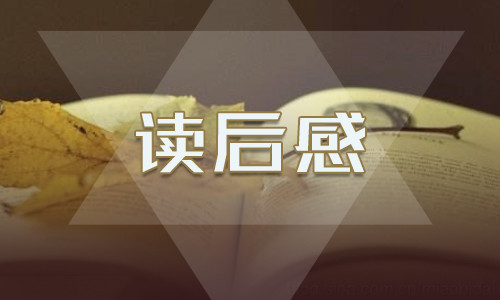英文资料及中文翻译
Radio Receiver
A block diagram for a modern radio receiver is show n in Fig..2-4.The in put sig nals to this radio are amplitude-modulated radio waves. The basic electro nic circuits in elude: antenna ,tuner, mixer, local oscillator ,IF amplifier, audio detector, AF amplifier, loudspeaker, and power supply.
Loudspeaker
AF amplifier
Fig.2-4 A Block Diagram For Moder n Radio Receiver
Any antenna system capable of radiating electrical energy is also able to abstract energy from a
passing radio wave. Since every wave passing the receiving antenna. In duces its own voltage in the antenna con ductor, it is n ecessary that the recei ving equipme nt be capable of separat ing the desired sig nal from the unwan ted sig nals that are also in duci ng voltages in the antenna. This separati on is made on the basis of the differe nee in frequency between transmitting stations and is carried out by the use of resonant circuits, which can be made to discriminate very strongly in favor of a particular frequency. It has already bee n poin ted that, by making antenna circuit res onant to a particular freque ncy, the en ergy abstracted from radio waves of that freque ncy will be much greater tha n the en ergy from waves of other freque ncies; this alone gives a certa in amount of separati on betwee n signals. Still greater selective action can be obtained by the use of additional suitably adjusted res onant circuits located somewhere in the receiver in such a way as to reject all but the desired signal. The ability to discriminate between radio waves of different freque ncies is called selectivity and the process of adjust ing circuits to res onance with the freque ncy of a desired sig nal is spoke n of as tuning.
Although intelligible radio signals have been received from the stations thousands of miles distant, using only the energy abstracted from the radio wave by the receiving antenna much more satisfactory reception can be obtained if the received energy is amplified. This amplification may be applied to the radio-frequency currents before detection, in which case it is called radio-frequency amplification or it may be applied to the rectified currents after detection, in which case it is called audio-frequency amplification. The use of amplification makes possible the satisfactory reception of signals from waves that would otherwise be too weak to give an audible response.
1
The process by which the signal being transmitted is reproduced from the radio-frequency currents present at the receiver is called detection, or sometimes demodulation. Where the intelligence is transmitted by varying the amplitude of the radiated wave, detection is accomplished by rectifying the radio frequency current. The rectified current thus produced varies in accordance with the signal originally modulated on the wave irradiated at the transmitter and so reproduces the desired signal. Thus, when the modulated wave is rectified, the resulting current is seen to have an average value that varies in accordance with the amplitude of the original signal.
Receiver circuit are made up a of a number of stages. A stage is a single transistor connected to components which provide operating voltages and currents and also signal voltages and currents. Each stage has its input circuit from which the signal comes in and its output circuit from which the signal, usually amplified, goes out. When one stage follows another, the output circuit of the first feeds the signal to the second. And so the signal is amplified, stage by stage, until it strong enough to operate the loudspeaker.
Radio Waves
Radio Waves are a member of the electromagnetic of waves. They are energy-carriers which travel at the speed of light ( as for any wave motion, by the equation
v =?* 入
v ), their frequency⑺ and wavelength(
入)being
where v =c=3.0*108m/s in a vacuum (or air). If 入=300m,then ?= v / 入=3.0*108 /(3.0*10 2)=106Hz=1MH z. The smaller is, th^larger ?.
Radio Waves can be described either by their frequency or their wavelength. But the former is
more fun dame ntal sin ce, uni ike travel form one medium to another.
Radio Waves can travel form a transmitting aerial in one or more of three different ways. Surface or ground wave.. This travels along a ground, the curvature of the earth 's surface. Its range is limited mainly by the extent to which energy is absorbed form it by the ground. Poor conductors such as sand absorb more strongly that water, and the higher the
入(and v ), f does not cha nge whe n the w
2
frequency the greater the absorption. The range may be about 1500km at low frequencies (long wave, but much less for v. h. f.).
Sky wave. This travels skywards and, if it is below a certain critical frequency (typically 30MHz), is returned to earth by the ionosphere. This consists of layers of air molecules (the D,E and F layer), stretching form about 80km above the earth to 50km, which have become positively charged through the removal of electrons by the sun' s ultraviolet radiati on. On striki ng the earth the sky wave boun cesback to the iono sphere where it is again gradually refracted and returned earthwards as if by 'reflection '. This continues until it is completely attenuated.
Space wave. For v. h . f., u. h. f. and microwave sig nals, only the space wave, giving line-of sight transmission, is effective. A range of up to 150km is possible on earth if the tran smitti ng aerial is on high ground and there are no in terve ning obstacles such as hills, build ings or trees.
Oscillators
Electrical oscillators are widely used in radio and television transmitters and receivers, in signal generators, oscilloscopes and computers, to produce A.C. with waveforms which may be sinusoidal, square, sawtooth etc. and with frequencies from a few hertz up to millio ns of hertz.
Oscillatory circuit
Whe n a capacitor discharges through an in ductor in a circuit of low resista nee, an A.C. flows. The circuit is said to oscillate at its n atural freque ncy which, as we will show shortly, equals1 2 LC , i.e. its resonant frequency f0. Electrical resonance thus occurs when the applied freque ncy equals the n atural freque ncy as it does in a mecha ni cal system..
In Fig,2-2(a) , a charged capacitor C is shown connected across a coil L.C immediately starts to discharge, current flows and a magnetic field is created which in duces an e. m. f. in L. This e. m. f. opposes the curre nt . When C is completely discharged the electrical energy originally stored in the electric field between its plates has been transferred to the magnetic field around L.
Fie 2-2(a)
Fit 2-2
By the time the magnetic field has collapsed, the energy is again stored in C. Once more C starts to discharge but current now flows in the opposite direction, creating a magnetic field of opposite polarity. When this field has decayed, C is again charged with its upper plate positive and the same
3





